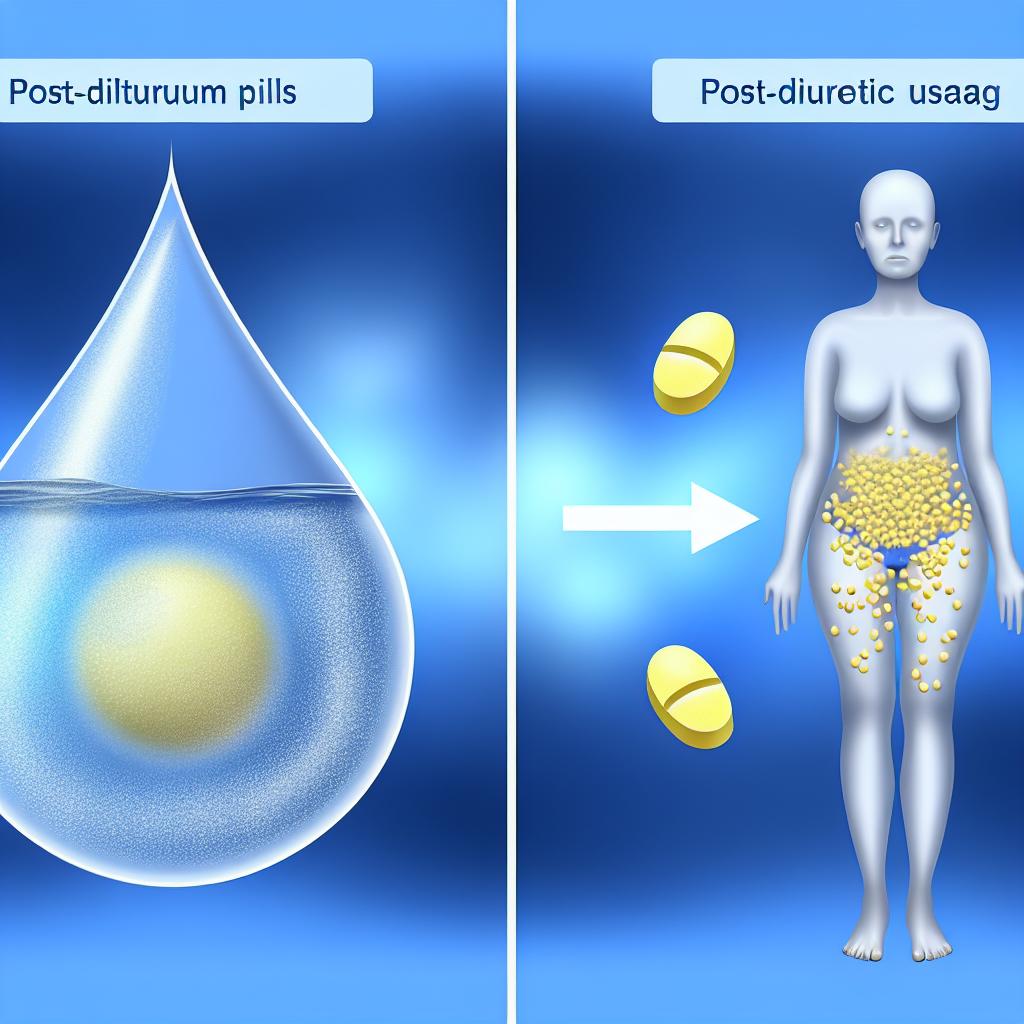
The role of diuretics in managing fluid retention.
Understanding Fluid Retention
Fluid retention, medically referred to as edema, is a condition that manifests when there is an excessive accumulation of fluid within the body’s tissues. This can lead to noticeable swelling in specific areas, such as the ankles, feet, hands, or even the abdominal region. The onset of fluid retention is often linked to various underlying health conditions including, but not limited to, heart failure, liver disease, kidney issues, or as a side effect of certain medications. Proper management of fluid retention is imperative to alleviate discomfort and to avert additional health complications. Among the primary strategies employed to control this condition is the use of diuretics.
The Role of Diuretics
Diuretics, sometimes colloquially referred to as “water pills,” are medications specifically designed to increase the production of urine by the kidneys. This enhancement of urinary output aids the body in expelling excess fluid, thereby addressing one of the core issues associated with edema — swelling. Diuretics are often prescribed for a variety of conditions where fluid retention is common, such as hypertension, different forms of heart failure, as well as certain kidney and liver conditions that predispose individuals to fluid buildup.
Types of Diuretics
There are several classes of diuretics, each operating through distinct mechanisms to achieve the ultimate goal of excess fluid removal. Understanding the differences among these classes helps tailor treatment to specific needs:
Thiazide Diuretics: Thiazides are frequently used in the management of high blood pressure and mild forms of fluid retention. They function by inhibiting the reabsorption of sodium and chloride ions in the distal tubules of the kidney, which in turn amplifies urine output. This class of diuretics is generally well-tolerated and effective for long-term management.
Loop Diuretics: Loop diuretics are more potent than their thiazide counterparts, acting on the loop of Henle in the kidneys to obstruct the reabsorption of both sodium and chloride ions. This leads to a substantial removal of fluid from the body. Because of their potency, loop diuretics are often the preferred choice for managing severe edema, particularly in patients with congestive heart failure where fluid overload is a significant concern.
Potassium-Sparing Diuretics: These diuretics offer the added advantage of preventing potassium loss, a common side effect associated with other types of diuretics. They accomplish this by affecting the sodium-potassium exchange in the kidneys, allowing for fluid reduction while maintaining a more favorable electrolyte balance.
Common Uses and Considerations
While diuretics play a crucial role in the management of fluid retention, their use necessitates certain considerations. Patients prescribed diuretics must be cognizant of potential side effects such as electrolyte imbalances, dehydration, and fluctuations in blood pressure. This makes the involvement of healthcare providers essential for accurate dosing and regular monitoring. In conjunction, dietary modifications, especially sodium intake adjustments, may be advised to augment the efficacy of diuretics. Proper education on these aspects can empower patients to manage their condition more effectively and reduce risks associated with improper use.
Getting More Information
For those interested in delving deeper into the nature of fluid retention and the role of diuretics, consulting reliable medical resources or direct communication with healthcare professionals is recommended. Various reputable medical entities offer comprehensive insights and advice that can be instrumental for both patients and caregivers. For further exploration, consider reviewing information shared by organizations like the Mayo Clinic or the American Heart Association.
Causes of Fluid Retention in More Detail
Fluid retention can have multiple causes, often varying in severity and the specific part of the body affected. While heart failure, liver disease, and kidney problems are primary medical conditions that contribute to edema, other factors also play significant roles. For instance, hormonal changes, particularly those associated with pregnancy or menstrual cycles, can cause temporary fluid retention. Furthermore, standing or sitting for extended periods can impede blood circulation, leading to localized swelling, especially in the lower limbs.
Medications, too, are a common contributor to fluid retention. Non-steroidal anti-inflammatory drugs (NSAIDs), corticosteroids, and some blood pressure medications can cause the body to retain fluid. Additionally, dietary habits, such as a high intake of salty foods, may exacerbate fluid retention issues due to the water-retaining properties of sodium.
Diagnosis and Treatment Options
The diagnosis of fluid retention involves a combination of physical examination and the consideration of patient history. A healthcare provider will often assess visible swelling and inquire about symptoms such as rapid weight gain or a feeling of heaviness. Laboratory tests, imaging studies, or other diagnostic procedures might be conducted to pinpoint the underlying causes.
Treatment strategies for fluid retention are closely aligned with addressing its root causes. When linked to lifestyle factors, interventions such as reducing dietary sodium, engaging in regular physical activity, and wearing compression garments may be beneficial. In cases where fluid retention is associated with medication use, consulting with healthcare professionals to adjust dosages or explore alternative treatments may yield improvements.
For situations rooted in significant health conditions like heart or kidney diseases, managing the primary disorder often leads to a reduction in symptoms associated with edema. This might include complex interventions such as surgery, dialysis, or advanced pharmaceutical regimens under close medical supervision.
